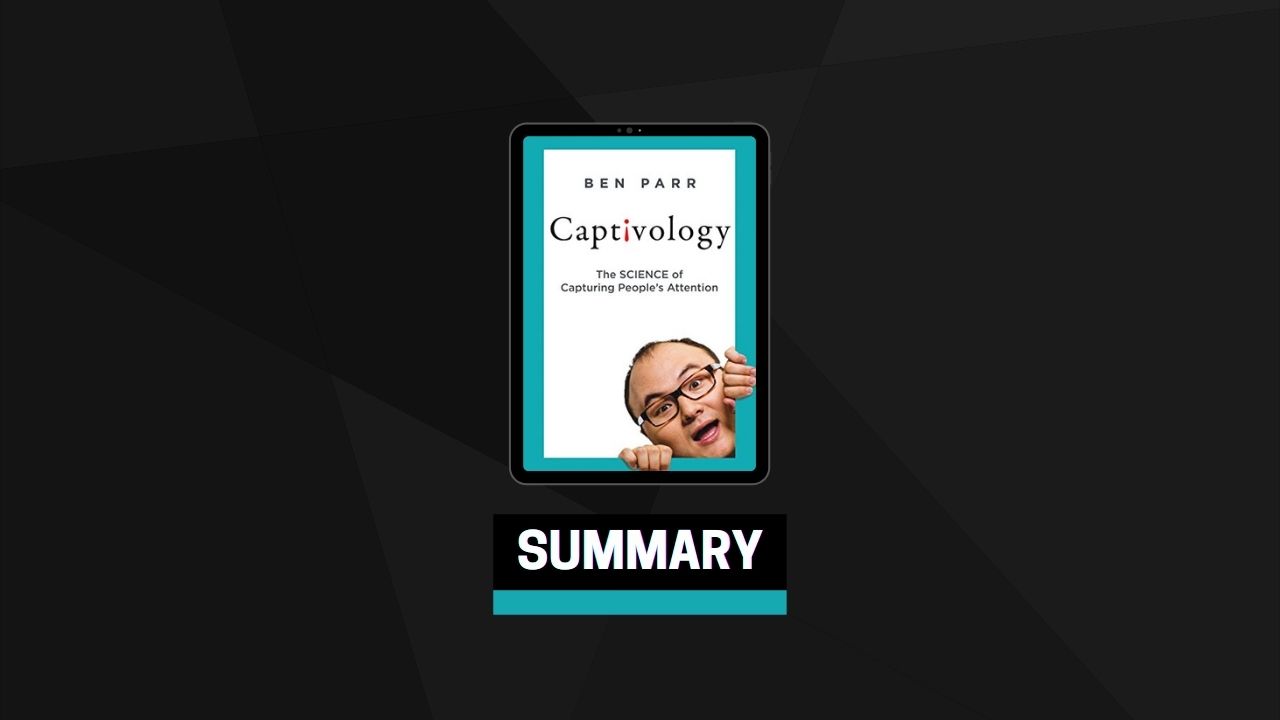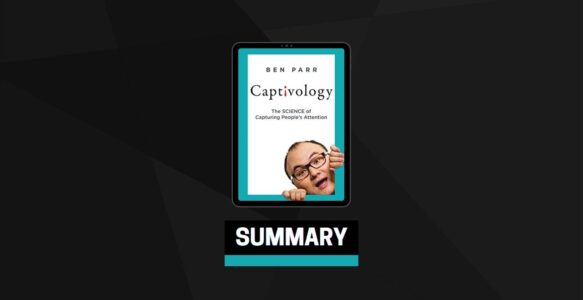The Three Stages of Attention
When you’re trying to capture the attention of others—whether it’s a classroom full of students or dispersed readers of your blog—you must remember that they can only pay attention to a small number of people and ideas. With thousands of distractions and priorities competing for your audience’s attention, it’s easy to see why their focus can be so fleeting.
To build a bonfire of attention for your message, you have to capture your audience’s immediate, short, and long attention. First, you need to elicit a reaction by being distinctive or disruptive. Once you have your audience’s immediate attention, you need something unique, novel, and useful to keep their working memory focused on your message. Having secured their short attention, you must create value for your audience to capture their long-term attention.
The captivation triggers are ideal tools to use to capture these three types of attention. The triggers—Automaticity, Framing, Disruption, Reward, Reputation, Mystery, and Acknowledgment—will help you build a bonfire of attention by progressing from capturing your audience’s immediate attention to mesmerizing their short attention and finally to captivating their long attention.
Automaticity Trigger
Our senses process the world around us and direct our attention, long before we’re even conscious or aware of them. The subconscious influences that color, sound, touch, and other sensory experiences have on our attention are necessary mechanisms for our survival. This influence happens automatically, before we—or our audiences—have a chance to think.
That’s why the Automaticity Trigger—our tendency to pay attention to certain sensory cues because of their contrast or the unconscious associations we have with those cues—is so good at capturing our attention—or interrupting our concentration. Certain stimuli become more attention grabbing in the right contexts. We will pay attention to a lion before an antelope. We will pay attention to a gunshot over the chirps of robins. And we will usually look at red before blue, especially if romance or sex is involved.
We cannot deny that danger, lust, and pain capture our attention, but they don’t control it or maintain it. To truly capture, maintain, and grow attention, you have to enter somebody’s consciousness. You not only have to capture someone’s immediate attention and elicit a reaction, but you also have to capture someone’s short attention and make him or her focus on you, your idea, or your message.
Framing Trigger
The Framing Trigger has a major impact on both our short attention (our short-term focus) and our long attention (our long-term interests). By using the Framing Trigger, you can get on your audience’s radar and either adapt to or change their frame of reference so they become more receptive to you and your message.
People don’t change their frames of reference on a dime, though, and for good reason. If we kept changing our opinions and listening to every argument somebody threw our way, we’d be overwhelmed. This is why we have frames of reference in the first place—they help us understand our world through the lens of our past experiences.
So you need to take the time to first understand your audience’s frames of reference before choosing a strategy for capturing attention. Your audience is not keenly aware of the reason why they reject a résumé, put on deodorant, donate to a political campaign, or coast by Susan Keser the violinist on their way to work, but you now are. And you can use that to your advantage.
Disruption Trigger
One of the reasons Game of Thrones has been so successful is its penchant for disrupting expectations. How does it do this? By unexpectedly killing off lead characters, oftentimes in shocking and brutal fashion. Authors of popular book series are not supposed to kill off main characters, but George R. R. Martin does it anyway. These dramatic and unexpected moments are examples of the Disruption Trigger in action. When you look deeper, you can see the three S’s of disruption in action.
Surprise, simplicity, and significance just can’t be ignored when using the Disruption Trigger to capture attention, because if you ignore even one, your message simply becomes less captivating. If someone were to surprise me with a football jersey, I’d pay attention and be thankful. But a gift with significance will be more attention grabbing. I would be far more excited about a Chicago Bears jersey (my favorite team) than I would be about the Oakland Raiders (I couldn’t care less about them). Each S reinforces the other until you have something that cannot be ignored.
The Disruption Trigger is just one trigger, though, and its strength is in capturing attention for a brief period of time rather than maintaining it over long periods of time. It’s primarily a tool for capturing short attention, and it can quickly fizzle out if you don’t follow up with the other captivation triggers.
Reward Trigger
Our brain is wired to find the path of least resistance to a reward when possible. This is why extrinsic rewards are ideal for immediate and short attention and why so many of us succumb to our cravings for McDonald’s. On the other hand, if we can exhibit self-control, our attention and decisions will focus on long-term intrinsic rewards. This is why intrinsic rewards are a tool for capturing long attention.
The rewards that motivate us differ from person to person, but in the end, it really does come down to one thing: a reward has to solve somebody’s problem. In the immediate term, money and extrinsic rewards solve problems like hunger, short-term pleasure, and the ability to buy your wife something nice. But over the long term, our motivations are intrinsic. Will I be successful? Will I find love? Will I get the respect that I deserve?
The key to capturing attention with the Reward Trigger is using extrinsic and intrinsic rewards in the right situations and discovering the motivations your audience have for achieving those rewards. Finding the right balance between extrinsic and intrinsic rewards means the difference between happy employees who stick with your company and disgruntled ones who never achieve their potential. The key is helping solve people’s short-term problems while giving them the opportunity to better themselves in the long term.
Reputation Trigger
A reputation is the embodiment of a person, company, or idea’s credibility and worthiness. It is this credibility and worth that determine whether something is worth our time and long-term interest. That’s why reputations are important shortcuts for quickly determining who is worthy of our attention. When simply hearing your name makes people pay attention, you have become a master of attention.
We’ve analyzed our strange and sometimes irrational relationship with the three main types of reputable figures that are at the heart of the Reputation Trigger—from the perceived wisdom of experts to the power of authority figures to the trust and conformity of the crowd. Each has its role in our attentional system. But just as J. K. Rowling’s name can quickly summon best-selling status, the fall of a reputable figure who lies his or her way to the top can capture attention—albeit the wrong kind of attention.
Perhaps that’s the lesson we should take away from the Reputation Trigger. Our trust in experts, authority figures, and the crowd is incredibly strong, and sometimes that blinds us from making informed decisions about where our scarce attention should be placed. But these people are still people—humans who can and do make mistakes. Never be afraid to make your own independent judgments.
Mystery Trigger
“It’s one of the basic human instincts to be attracted to mysteries and to look for the solution to them,” award-winning mystery writer Tana French once said in an interview with NPR. French couldn’t be more right. A great mystery activates our curiosity and makes us uncomfortable enough to seek out an answer. A great mystery sticks in our mind and demands our attention until it is solved.
Mystery is more than just sleuths solving crimes; it’s tied into the everyday unsolved questions of life. We are driven to seek answers to unsolved riddles, not just from the stories we read but also from questions about the universe itself. Here’s how Isaac Newton summarized his life:
I do not know how I may appear to the world, but to myself I seem to have been only like a boy, playing on the sea-shore, and diverting myself, in now and then finding a smoother pebble or prettier shell than ordinary, whilst the great ocean of truth lay all undiscovered before me.
Mysteries are fundamental to human nature, and thus they are fundamental to our attention. “Mystery is a good thing,” director Steven Soderbergh told, “I think it’s a good thing in life; I think it’s a good thing in narrative.” Soderbergh and Newton both understood just how important mystery is to our lives, and thus why the Mystery Trigger is a fundamental tool for commanding our long attention.
The Influence of Attention
Hopefully you have a better understanding now why some ideas and ideologies are so compelling and why other ideas simply don’t capture your attention, even if you know they should.
The lessons of this book apply everywhere, from teaching to entrepreneurship to your personal relationships.
Use Captivology to not only capture the attention of others but to improve the quality of your own life as well. You have the tools and the knowledge to build long-lasting attention. Now go and use them.


